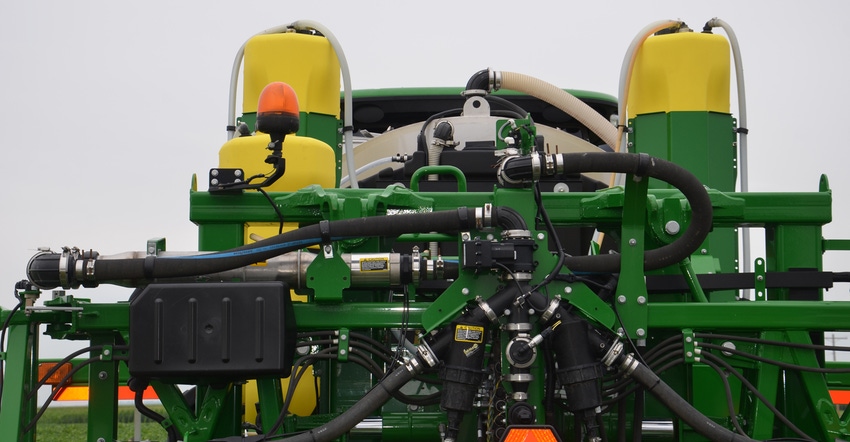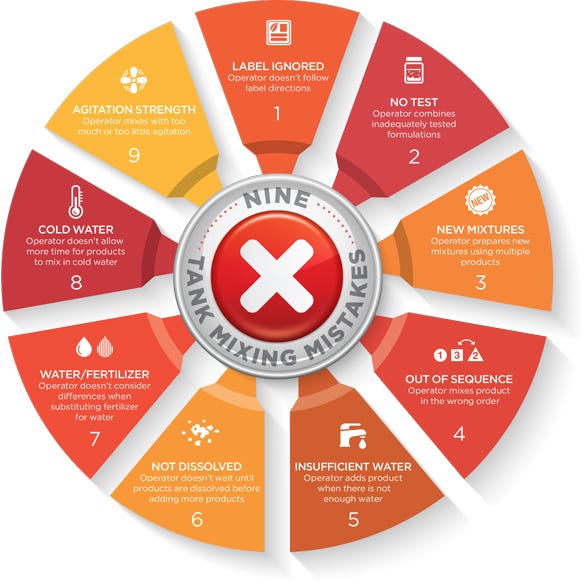
Fred Whitford sees a similarity between cooking and mixing up spray mixtures. “You know what happens when you don’t follow the recipe with cooking,” he says. “It’s the same thing with mixing chemicals and a carrier. There can be compatibility issues.”
Whitford is director of Purdue University Pesticide Programs. “Follow the rules, and it’s like Cooking 101,” he says. “You’ll have a good day.”
Whitford outlines how to do things correctly and what happens if you don’t in Avoid Tank Mixing Errors, PPP-122. Order it at edustore.purdue.edu or ppp.purdue.edu.
If you don’t follow the rules, you may learn the hard way, Whitford says. He’s documented nine common mixing errors and what happens when “Cooking 101” goes awry. Here are the nine mistakes:
1. Ignore the label. This is the easiest way to invite trouble, Whitford says. If there are special instructions, the label will spell them out.
2. Mix up untested formulations. If you’ve never mixed a specific combination before, conduct a jar test on a small scale before risking messing up hundreds of gallons of mixture, Whitford suggests.
3. Try new mixtures using multiple products. Follow labels for each product very carefully when you’re using several products you’re not familiar with, or you may not like the results.
4. Mix products out of order. You’re inviting trouble, the Extension specialist says. There is a right and wrong way to add ingredients to make a perfect a cake; the same applies to herbicide mixtures.
5. Add products without enough carrier in the tank. The carrier may be water or fertilizer. In either case, if there isn’t enough volume, you may end up with globs of material in the tank.

SIMPLE MISTAKE: Here’s an unpleasant surprise someone found in their spray tank. This sediment formed when someone mixed glyphosate and 2,4-D before the tank was 50% full of water.

6. Add products too quickly. Certain products need time to dissolve or suspend before other products are added. Allow time for a product to dissolve and disperse.
7. Ignore the carrier. Water and fertilizer are two different animals. You may need to follow different procedures when using one vs. the other, Whitford emphasizes.
8. Disregard water temperature. It takes longer for products to mix in cold water. Determine if you need to adjust for water temperature.
9. Agitate too much or not enough. Either one can be as problematic as the other, Whitford says. Too much agitation causes liquid flowable products to foam. Too little agitation may not completely dissolve dry materials.
Check out the graphic below that summarizes these nine mistakes.

About the Author(s)
You May Also Like




